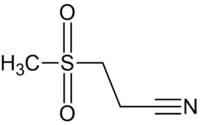
Photo from wikipedia
NLRP3 activation plays a key role in the initiation and progression of a variety of neurodegenerative diseases. However, understanding the molecular mechanisms involved in the bidirectional signaling required to activate… Click to show full abstract
NLRP3 activation plays a key role in the initiation and progression of a variety of neurodegenerative diseases. However, understanding the molecular mechanisms involved in the bidirectional signaling required to activate the NLRP3 inflammasomes is the key to treating several diseases. Hence, the present study aimed to investigate the role of lipopolysaccharide (LPS) and hydrogen peroxide (H2O2) in activating NLRP3 inflammasome-driven neurodegeneration and elucidated the neuroprotective role of perillyl alcohol (PA) in in vitro and in vivo models of Parkinson's disease (PD). Initial priming of microglial cells with LPS following treatment with H2O2 induced NF-κB translocation to the nucleus with a robust generation of free radicals that act as signal 2 in augmenting NLRP3 inflammasome assembly and its downstream targets. PA treatment suppresses the nuclear translocation of NF-κB, enhances PARKIN translocation into the mitochondria, and maintains cellular redox homeostasis in both mouse and human microglial cells that limit NLRP3 inflammasome activation along with processing of active caspase-1, IL-1β, and IL-18. To further correlate the in vitro study with the in vivo MPTP model, treatment with PA also inhibited the nuclear translocation of NF-κB and downregulated the NLRP3 inflammasome activation. PA administration upregulated various antioxidant enzymes' levels and restored the level of dopamine and other neurotransmitters in the striatum of the mouse brain, subsequently improving the behavioral activities. Therefore, we conclude that NLRP3 inflammasome activation required a signal from damaged mitochondria for its activation. Further pharmacological scavenging of free radicals restricts microglia activation and simultaneously supports neuronal survival via targeting the NLRP3 inflammasome pathway in PD.
Journal Title: ACS chemical neuroscience
Year Published: 2021
Link to full text (if available)
Share on Social Media: Sign Up to like & get
recommendations!